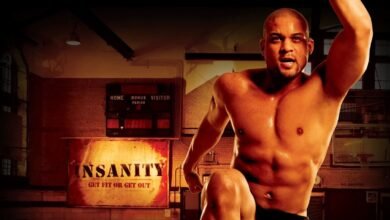Dealing with a dislocated thumb can be painful and irritating, substantially impacting your day-to-day existence and activities. The pain and impairment that comply with such harm require powerful control techniques to alleviate aches and facilitate restoration. This guide offers eight important recommendations for dealing with pain from a dislocated thumb, ensuring you have the expertise to aid your recovery.

Understanding Thumb Dislocation
A thumb dislocation takes place when the joint of the thumb is made out of its everyday alignment, generally because of trauma or forceful impact. This can bring about extreme aches, swelling, and a lack of ability to transport the thumb well. Recognizing the symptoms early and knowing the causes is crucial for well-timed and effective remedies.
Immediate Actions Post-Injury
The moments following the injury are essential. It’s imperative to avoid attempting to correct the dislocation yourself, as flawed management could exacerbate the injury. Immediate steps should include defending the thumb from additional harm and seeking professional medical interest to determine and deal with the dislocation.
8 Tips for Managing Pain from a Dislocated Thumb
1. R.I.C.E. Method (Rest, Ice, Compression, Elevation): This preliminary treatment is pivotal in the first 24-48 hours post-harm. Resting prevents additional strain, ice reduces swelling, compression facilitates the limit of infection, and elevation decreases swelling.
2. Medication: Over-the-counter pain relievers can relieve pain and swelling, including ibuprofen or acetaminophen. Your healthcare issuer may prescribe more potent ache medicine for more severe cases.
3. Physical Therapy: Once your healthcare company approves, accomplishing physical remedy sporting activities may be helpful. These physical activities are designed to repair a range of movement, beef up the muscle mass around the thumb, and facilitate a go-back to regular sports.
4. Splinting and Bandaging: Immobilizing the thumb with a splint or bandage enables proper alignment for the healing system’s duration, stopping similar harm and aiding in pain control.
5. Heat Therapy: Applying warmth to the affected place can promote blood float and reduce pain, but it is only to be used after the initial swelling has decreased, typically some days after the harm.
6. Diet and Nutrition: Consuming ingredients rich in anti-inflammatory properties, which include omega-3 fatty acids, turmeric, and ginger, can assist the frame’s herbal recuperation procedure. Additionally, staying hydrated and keeping a balanced weight-reduction plan aids average fitness and restoration.
7. Stress Management: Managing strain via meditation, yoga, or breathing sporting events may significantly impact pain belief and recovery. Stress control strategies are now not the only helpful resource for relaxation; they promote an extra excellent attitude throughout the recovery adventure.
8. Alternative Remedies: Some individuals discover remedies via opportunity remedies such as acupuncture or rubdown remedies. These strategies can assist in lessening pain, enhance stream, and enhance typical nicely-being, complementing conventional remedy techniques.

Prevention Tips
Preventing thumb dislocations requires expertise and avoiding high-risk sports that strain the thumb excessively. Protective gear, proper hand positioning, and hand and wrist strengthening exercises can mitigate injury risks. Protective measures such as wearing thumb braces or guards during activities like basketball or skiing can provide additional support. Moreover, practicing proper techniques and avoiding reckless maneuvers can significantly reduce the likelihood of a Dislocated Thumb. Regular stretching and strengthening routines focusing on the hand and wrist muscles also play a crucial role in preventing such injuries and promoting overall hand health and performance in sports.
Conclusion
Recovering from a dislocated thumb requires a complete approach that consists of instant care, professional steering, and self-control strategies. Following these eight recommendations for handling aches from a dislocated thumb, individuals can navigate their restoration more efficiently, ensuring a return to ordinary function and activity levels. Remember, all individuals’ mending methods are explicit, so paying attention to your edge and talking with medical care experts to fit the recuperating plan to your extraordinary wishes is imperative.
FAQs about Dislocated Thumb
How do I understand if my thumb is dislocated?
Common signs of a dislocated thumb include extreme pain, swelling, bruising, and a noticeable misalignment of the thumb joint. You may additionally revel in difficulty shifting your thumb or gripping objects.
What causes a dislocated thumb?
Dislocated thumbs frequently result from a forceful effect, including a fall or an instantaneous blow to the hand. Sporting activities, accidents, and other worrying occasions can result in this injury.
What do I do if I suspect a dislocated thumb?
Seek medical attention straight away. Avoid popping the thumb lower back into place for your personal, as this could cause further harm. Immobilize the thumb using a splint or a makeshift assist, and practice ice to reduce swelling.
How is a dislocated thumb identified?
A healthcare professional will perform a physical examination and may order X-rays to assess the quantity of the dislocation and rule out other capability injuries.





